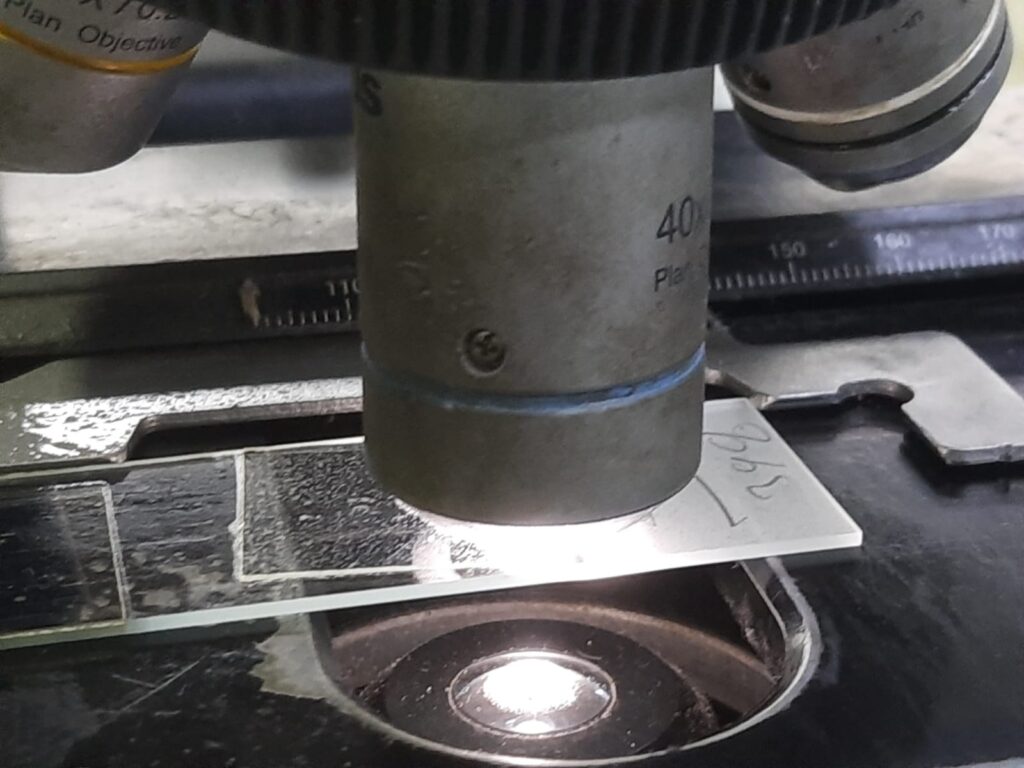Introduction
Table of Contents
Potassium Hydroxide (KOH) mount is a simple, rapid, and cost-effective microscopic technique used to detect fungal elements in various clinical specimens, including urine samples.

When fungal infection of the urinary tract (funguria) is suspected—especially in immunocompromised, diabetic, or catheterized patients—KOH mount helps visualize yeast cells, pseudohyphae, or hyphae directly under the microscope.

The KOH solution digests background debris, leaving fungal cell walls intact for clear visualization.
Fungal Elements Observed in Urine KOH Mount

1. Yeast Cells
- Appearance: Round or oval, refractile, budding cells.
- Common Species: Candida albicans, Candida glabrata, Candida tropicalis.
- Significance: Indicates candiduria, often associated with catheter use, diabetes, or antibiotic therapy.
2. Pseudohyphae
- Appearance: Elongated, segmented filaments with constrictions at septa.
- Interpretation: Suggestive of invasive or active fungal infection (commonly Candida albicans).
3. True Hyphae
- Appearance: Long, branching filaments (may show septation).
- Possible Organisms: Aspergillus, Fusarium, or other filamentous fungi (rare in urine, often due to contamination or deep infection).
4. Spores / Conidia (Occasional)
- Seen as small, round, refractile bodies in cases of environmental contamination or disseminated fungal infection.
Applications of Fungal Elements in KOH Mount of Urine Microscopy
- Rapid Diagnosis of Fungal Urinary Tract Infection (UTI).
- Screening Tool before culture or molecular identification.
- Bedside or routine test in resource-limited labs for early fungal detection.
- Used in oncology, ICU, and diabetic patient urine screening for opportunistic fungi.
- Helps differentiate colonization from infection when correlated with symptoms and culture.
Keynotes on Fungal elements in KOH Mount of Urine Microscopy

- Concentration of KOH: 10–20% solution.
- Microscopic Appearance: Fungal elements appear refractile, colorless, and well-defined against a clear background.
- Artifacts: Crystals, epithelial cells, or mucus threads may mimic fungal forms — require experienced interpretation.
- Culture Confirmation: Positive KOH findings must be followed by fungal culture on SDA (Sabouraud Dextrose Agar).
- Clinical Correlation: Important in diabetic, catheterized, and immunosuppressed patients.
Further Readings
- https://flabslis.com/blogs/koh-test-procedure
- https://ritm.gov.ph/laboratory-services/fungal-culture-and-susceptibility-test-urine-inclusion-1-potassium-hydroxide-mount-koh/
- https://www.researchgate.net/publication/346079105_Mount_the_Menace_-_Potassium_hydroxide_in_superficial_fungal_infections
- https://myhealth.alberta.ca/Health/pages/conditions.aspx?hwid=stk151109&
- https://www.myactivehealth.com/hwcontent/content/testdetail/hw268510.html
- https://www.anbg.gov.au/lichen/case-studies/fungal-basics.html
- https://www.pearson.com/channels/biology/asset/21329509/what-is-the-basic-structural-unit-of-a-fungus
- https://study.com/academy/lesson/hyphae-definition-function-types.html
- http://www.pidsphil.org/home/wp-content/uploads/2020/06/Vol-21-No-1_CASTELLANO_Urine-KOH-Final.pdf
- https://www.shutterstock.com/search/pseudo-hyphae-yeast-cell
